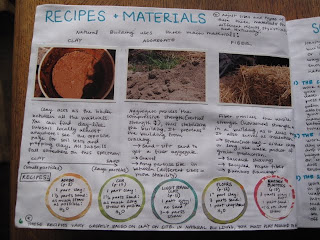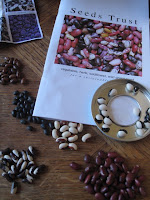Somehow 2 months have gone by since I've written a thing. I'll start with the newest structure that has popped up in the backyard village. It all started with a lot of these:

I believe around 700 to be exact.
These adobes- just soil, sand, straw and cow manure- were made to go into a structure called a Nubian Vault, which is a style of earthen vault building revived by the Eygptian architect Hassan Fathy that does not use any formwork, and therefore can be done without any wood. Our friend Stevan who studied the technique with masons in Burkino Faso was looking for places to build some of these vaults where they could be observed over time, and we gladly gave a portion of our yard for the purpose of vault research, and to make a stylish new home for our expanding flock of poultry.

Here we are looking through the front door to the back kick wall. These two kick walls were built prior to the workshop and are the walls that the adobes will lean against to make up the vault. The little box is the future chicken door.

Here the plumb bob is being used to transfer the dimensions of a catenary arch onto the kick walls. It is the shape the vault will follow, and is the inverted shape of a chain hanging between two points. Guide strings will be strung along the length of the building between the traced out form on both kick walls.

Stevan demonstrates the angle at which to lay the first adobes that will make up the vault during the workshop.

You can see the walls growing as the process gets further along. It was an extremely graceful structure to watch emerge.

And more still... you can see the angle of the rows of adobes clearly here.

Here you can start to see what happens in the middle when the different angles from the two ends come together in the middle.
Meanwhile the girls are checking it out from their old coop next door. They've started laying eggs, we're getting 6-7 a day from 10 chickens, ranging from tiny "practice eggs" to larger double yolkers. Unfortunately they've also started eating the duck eggs...
More pictures and updates coming soon!





































